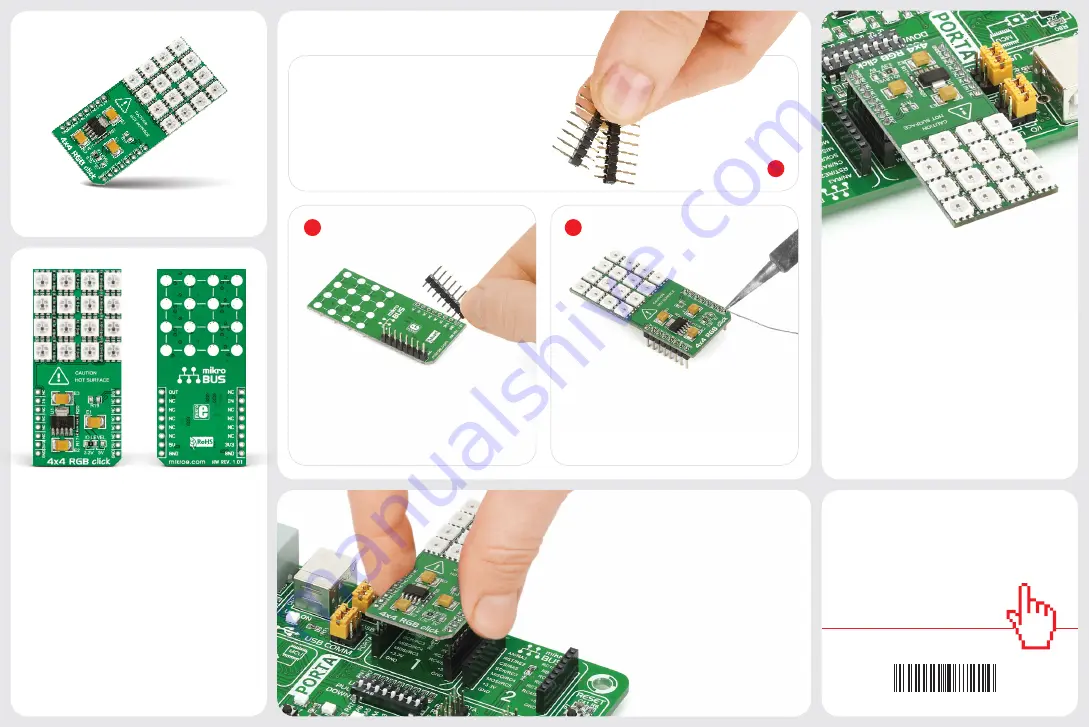
2
3
click
™
BOARD
www.mikroe.com
2. Soldering the headers
3. Plugging the board in
Once you have soldered the headers your
board is ready to be placed into the desired
mikroBUS
™
socket. Make sure to align the
cut in the lower-right part of the board with
the markings on the silkscreen at the
mikroBUS
™
socket. If all the
pins are aligned correctly,
push the board all the way
into the socket.
Turn the board upward again. Make sure
to align the headers so that they are
perpendicular to the board, then solder the
pins carefully.
Turn the board upside down so that
the bottom side is facing you upwards.
Place shorter pins of the header into the
appropriate soldering pads.
Before using your click
™
board, make sure
to solder 1x8 male headers to both left and
right side of the board. Two 1x8 male headers
are included with the board in the package.
4. Essential features
The LED matrix can heat up so be careful
when using 4x4 RGB click
™
. Avoid touching
the board when it’s in use, and don’t drive
the LEDs to max brightness levels. With that
in mind, you can use the board to generate
colorful moving displays (RGB LED matrices
are commonly used for displaying graphics
on electronic billboards, signs, and similar).
1
4x4 RGB click
™
carries a
matrix of 16
WS2812 RGB LEDs and a MCP1826 low
dropout regulator
. These LEDs actually
consist of three single colored LEDs (Red,
Green and Blue), plus a control chip in a
single package. The LED matrix is connected
to the target board microcontroller through
the mikroBUS
™
RST pin. The board uses
either a 3.3V or 5V power supply.
1. Introduction
4x4 RGB click
™
manual
ver 1.01
0100000077214
4x4 RGB
click
™


